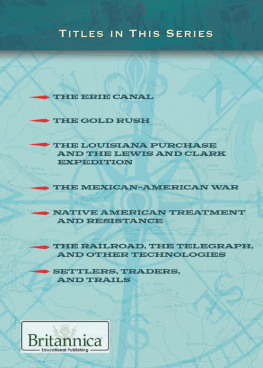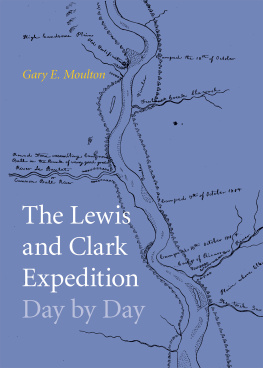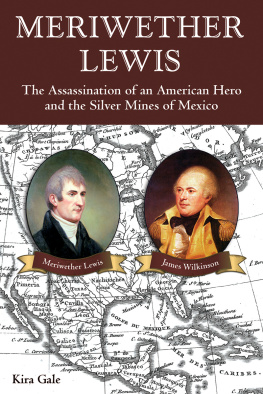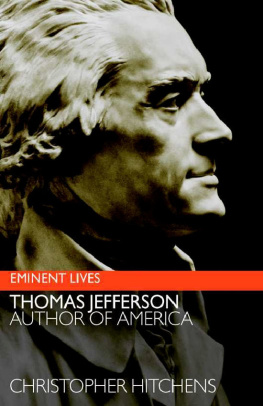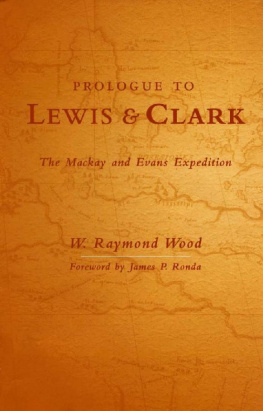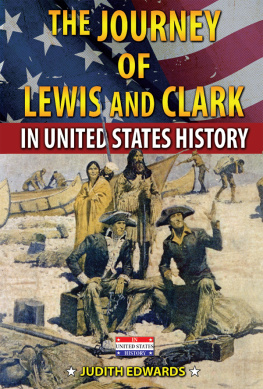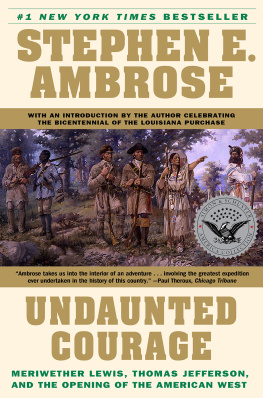
Published in 2018 by Britannica Educational Publishing (a trademark of Encyclopdia Britannica, Inc.) in association with The Rosen Publishing Group, Inc.
29 East 21st Street, New York, NY 10010
Copyright 2018 The Rosen Publishing Group, Inc. and Encyclopdia Britannica, Inc. Britannica, Encyclopdia Britannica, and the Thistle logo are registered trademarks of Encyclopdia Britannica, Inc. All rights reserved.
Distributed exclusively by Rosen Publishing.
To see additional Britannica Educational Publishing titles, go to rosenpublishing.com.
First Edition
Britannica Educational Publishing
J.E. Luebering: Executive Director, Core Editorial
Andrea R. Field: Managing Editor, Comptons by Britannica
Rosen Publishing
Heather Moore Niver: Editor
Nelson S: Art Director
Tahara Anderson: Series Designer
Cindy Reiman: Photography Manager
Heather Moore Niver: Photo Researcher
Library of Congress Cataloging-in-Publication Data
Names: Shea, Therese, author.
Title: The Louisiana Purchase and the Lewis and Clark Expedition / Therese M. Shea.
Description: New York : Britannica Education Publishing, in Association with Rosen Educational Services, 2018 | Series: Westward expansion: Americas push to the Pacific | Includes bibliographical references and index. | Audience: Grades 5-8.
Identifiers: LCCN 2017016045| ISBN 9781680487688 (eBook)
Subjects: LCSH: Lewis and Clark Expedition (1804-1806)--Juvenile literature. | Louisiana Purchase--Juvenile literature. | West (U.S.)--Discovery and exploration--Juvenile literature. | West (U.S.)--Description and travel--Juvenile literature.
Classification: LCC F592.7 .S48 2017 | DDC 917.804/2--dc23
LC record available at https://lccn.loc.gov/2017016045
Manufactured in the United States of America
Photo credits: Cover, pp. 11, 17, 27 Bettmann/Getty Images; pp. 5, 20, 38 Encyclopdia Britannica, Inc.; p. 9 Photos.com/Jupiter Images; p. 13 Architect of the Capitol; pp. 14, 23, Everett Historical/Shutterstock.com; p. 18 U.S. Diplomacy Center; p. 24 Ian Dagnall/Alamy Stock Photo; p. 26 Library of Congress, Washington, D.C.; p. 29 George Ostertag/Alamy Stock Photo; p. 31 DEA/G. Sioen/De Agostini/Getty Images; p. 32 William Mullins/Alamy Stock Photo; p. 33 Russ Bishop/Alamy Stock Photo; p. 35 North Wind Picture Archives; p. 37 Jean-Erick Pasquier/Gamma-Rapho/Getty Images; p. 39 The Washington Post/Getty Images; p. 41 Library of Congress, Geography and Map Division, Washington, D.C.; cover and interior pages (banner) Library of Congress Prints and Photographs Division.
CONTENTS
Chapter One
An Astounding Agreement
Chapter Two
The Controversy and the Constitution
Chapter Three
Establishing an Expedition
Chapter Four
To the Pacific
Chapter Five
The Return Adventure
T he Louisiana Territory was an object of great interest to European nations during their explorations of North America. This vast tract of land in the continents interior stretched from the Mississippi River to the Rocky Mountains and from Canada to the Gulf of Mexico. Explorations and scattered settlements in the seventeenth and eighteenth centuries gave France control over the river and title to most of the Mississippi valley. In 1762, France ceded the territory to Spain.
By 1800, the young and expanding United States was pushing up against the eastern edge of the Louisiana Territory. Great Britain held the territory of Canada to the north, and Spain owned Florida to the south. Spain allowed Americans to use the Mississippi River as well as the port of New Orleans, at the rivers mouth. In 1800, however, Spain ceded Louisiana back to France, leaving the United States uncertain about the future of transportation and trade on the Mississippi and uneasy about a powerful French neighbor. In 1803, President Thomas Jefferson dispatched ambassadors to Paris, France, to negotiate a deal for control of New Orleans. They got much more than they bargained for when France offered not only New Orleans but the whole Louisiana Territory. The Americans signed the unprecedented deal now known as the Louisiana Purchase.
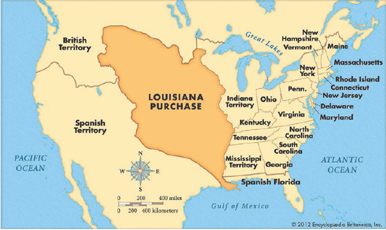
At the start of the nineteenth century, the states and territories of the United States were confined to eastern North America. The Louisiana Purchase moved the border westward and doubled the countrys size.
On December 20, 1803, the French flag was slowly lowered in New Orleans, followed by the raising of the American flag. The moment marked the transfer of the Louisiana Territory to the United States. The Louisiana Purchase doubled the countrys size, adding to it an area larger than todays Spain, Portugal, France, Italy, Germany, the Netherlands, Switzerland, and Great Britain combined. All or parts of thirteen states would be created from it. The United States was immediately elevated in stature among world powers.
An expedition to study the land, and hopefully find a navigable water route west to the Pacific Ocean, began in 1804. Headed by Meriwether Lewis and William Clark, the Lewis and Clark Expedition was a remarkable journey of nearly 8,000 miles (13,000 kilometers) across North America and back. Over two years the courageous group created maps, collected notes and specimens of previously unknown plants and animals, and named geographic locations after expedition members, peers, loved ones, and even their dog. They also made contact with numerous American Indian peoples who called the Louisiana Territory home.
The hardshipsincluding hunger, dysentery, boils, tick bites, and injurieswere balanced by incredible encounters with unspoiled beauty. The explorers were astonished by natural wonders and huge herds of elk, antelope, and bison. Their discoveries opened a new frontier for Americans, who were already looking westward for new adventures and opportunities.
But Lewis and Clarks journey would not have been as momentous if the United States had not just acquired the Louisiana Territory. And that acquisition occurred because the world stage was precisely set for an extraordinary agreement. The United States benefited greatly from the tense atmosphere in Europe during the rise of soon-to-be French emperor Napoleon Bonaparte.
F acing certain defeat at the hands of the British in the Seven Years War, France secretly ceded its North American lands west of the Mississippi Riverthe Louisiana Territoryto Spain in 1762. Months later, in the treaty that ended the war, France transferred virtually all its remaining land in North America to Great Britain. This arrangement, however, proved temporary.
French power recovered under the military leadership of Napoleon Bonaparte. On October 1, 1800, Napoleon persuaded King Charles IV of Spain to agree to cede Louisiana back to France under the Treaty of San Ildefonso. The treaty would reestablish French control of the commercially significant port of New Orleans as well as the mouth of the Mississippi River. Reports of this deal were received by the US government with great concern about its implications for the future of American commerce. These were the circumstances in which the Louisiana Purchase took shape.
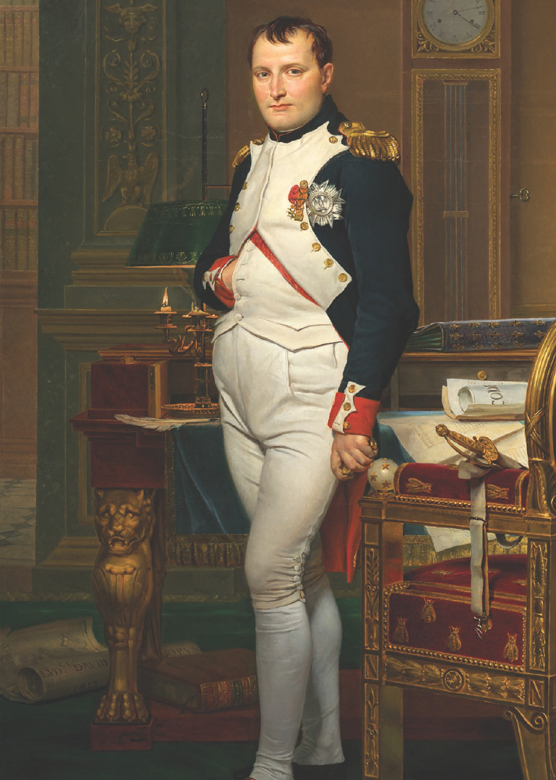
The Emperor Napoleon in His Study at the Tuileries, an 1812 oil painting by Jacques-Louis David, is found today in the National Gallery of Art in Washington, DC.

